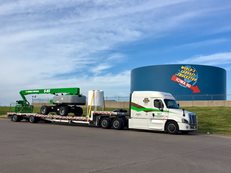
The American Transportation Research Institute (ATRI), a part of the American Trucking Association (ATA), recently posted its 2016 survey of the most critical issues facing the trucking industry. In it, they present a list of 29 topics that “have been identified as the top industry issues for 2016 by industry professionals.” Participants in the survey were instructed to choose the three most important topics that are of concern to them.
The 2016 survey ranked the following as the 10 most critical issues facing the trucking industry:
1. Electronic Logging Device Mandate
2. Hours of Service
3. Over-Regulation
4. Truck Parking
5. Economy
6. CSA
7. Driver Shortage
8. Driver Retention
9. Infrastructure/Congestion/Funding
10. Driver Distraction
One’s Perspective Makes All the Difference
Remember, the ATA represents mostly large trucking companies, which are actually in the minority. Ninety percent of the trucking industry is made up of small business trucking companies with ten or less trucks per the Owner-Operator Independent Driver Association (OOIDA). The most pressing issues identified in 2016 are from the perspective of a large carrier. The driver turnover average is 97% for large, long haul carriers - many represented by the ATA, so much of the information in this survey must be understood from that viewpoint. The day to day challenges facing a company with over one thousand drivers are much different than what the majority of trucking companies are facing.
Small Fleet Owner Sees Things Differently
I spoke with several small fleet owners at an industry conference recently to get an idea of what the pressing issues were for their companies. Among the many that were mentioned, there were three issues that rose to the top and that each of these small fleet owners agreed on. Their top 3 concerns in order were as follows:
- The Electronic Logging Device (ELD) Mandate – Concern was for the cost of the devices and monthly fees. They were also concerned about the impact to productivity and the unintended negative consequences on safety. There is no data to prove a safety benefit to ELDs, however it is being advertised as such.
- Truck Parking – There is a confirmed shortage of truck parking in the U.S., especially in the northeast corridor. Most Shippers/Receivers will not allow truckers to sleep on their property, thus adding to the problem of tired truckers in search of ample, safe parking that does not exist. The over-crowded rest areas and exit ramps is evidence of this.
- Driver Health/Wellness – The driver is in a race against the clock to travel as many miles as possible and find adequate parking. If this can be done successfully each day, there is no time left for adequate exercise, a decent meal and a good night’s sleep.
Both Viewpoints are Valid
Small fleets are more focused on the day to day factors that impact the productivity of their operation and contribute to driver satisfaction. The larger fleets represented by the ATA are big picture focused with concerns of the economy, infrastructure funding and driver shortage. Both perspectives are necessary in improving the trucking industry, but we must understand each perspective as they are the very reason of the differing concerns.